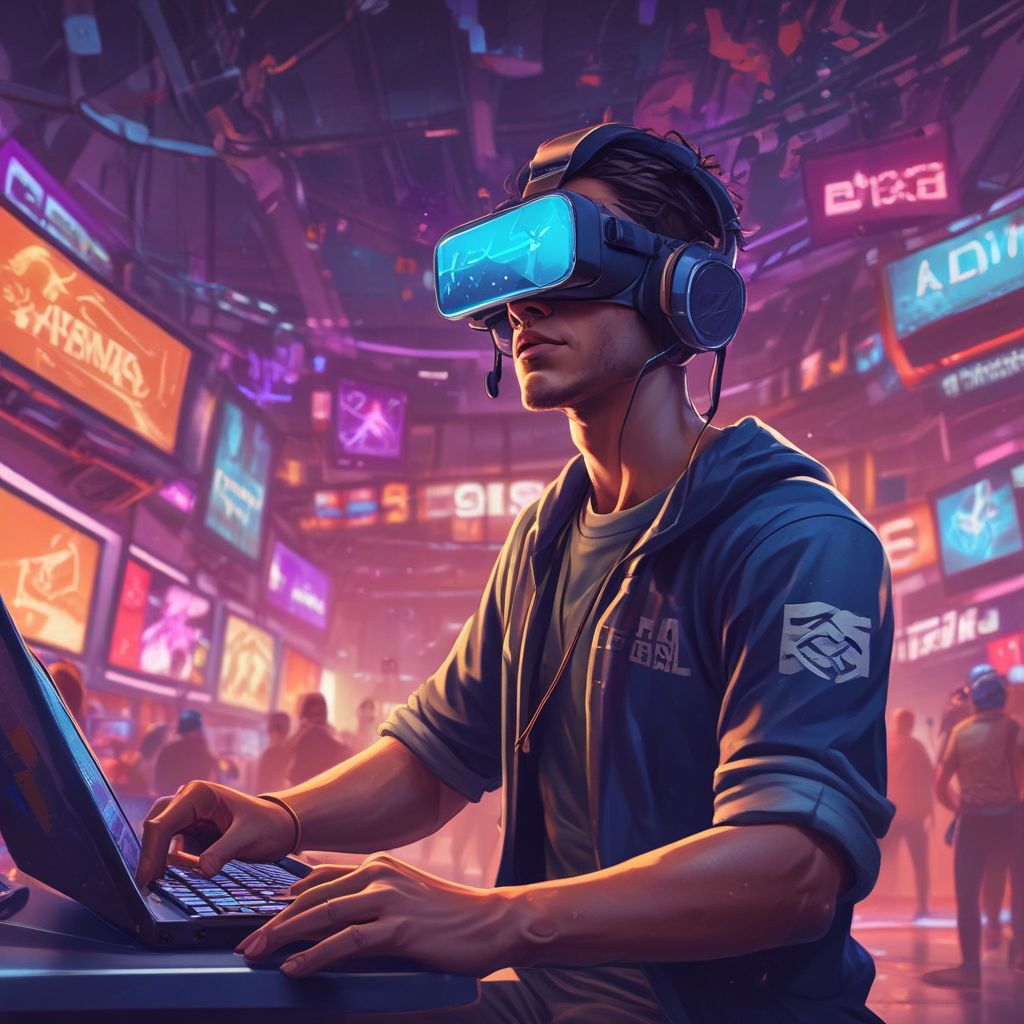The Dawn of Immersive Esports
Esports has boomed since the early 2010s, with Twitch viewership exploding to over 1.8 billion hours annually. Yet, traditional streams often feel distant. Viewers watch pixels on monitors while pros battle in isolation.
VR changes that. Devices like Meta Quest 3 and Valve Index have dropped in price, making VR accessible. Streamers saw the potential: why not host entire leagues in virtual worlds? The result? Tournaments where spectators aren’t just watchers—they’re part of the spectacle.
This pivot builds on past experiments. Echo Arena’s zero-gravity dodgeball drew thousands in VR lobbies pre-2023 shutdown. Now, streamers are reviving that magic with custom leagues for games like Contractors Showdown, Breachers, and custom VR battle royales.
How VR-Only Leagues Operate
These leagues run on platforms like VRChat, Rec Room, and custom Unity-built arenas. Pros compete in zero-latency virtual coliseums, streamed simultaneously to Twitch for non-VR viewers.
The magic lies in interactivity. Twitch chat doesn’t just spam emotes; it powers the arena. Fans with VR headsets join as avatars, filling digital stadiums that scale to millions virtually.
Core Mechanics
- Live Spectating: VR users teleport into floating arenas with 360-degree views, holographic replays, and player cams.
- Interactivity Layers: Chat votes decide map rotations, power-ups, or even halftime shows.
- Hybrid Streaming: Non-VR folks get enhanced Twitch overlays showing VR crowd reactions in real-time.
- Prize Pools: Crowdfunded via Twitch subs, with top fans winning VR swag or pro coaching sessions.
Matches last 20-40 minutes, with brackets advancing via elimination. Post-game, lobbies open for fan-pro 1v1s or casual scrims.
Streamers Driving the Revolution
Veteran Twitch stars are leading. Valkyrae, with her 4M+ followers, hosts “ValkVR Clash”—a weekly Breachers tournament. She competes alongside fans, blurring lines between creator and community.
Ludwig, the mogul behind Mogul Moves, launched “Luddy’s Virtual Arena” last month. It drew 50K peak viewers, half in VR. “It’s like Coachella in your headset,” he tweeted post-event.
Emerging VR natives shine too. “VRGhost,” a 500K-sub Quest streamer, runs “Phantom League” exclusively on standalone headsets—no PC required. shroud dipped in with a guest spot, praising the “sweaty immersion” on stream.
These pioneers fund leagues via sponsorships from HTC Vive, Meta, and energy drinks targeting Gen Z gamers.
Boosting Fan Engagement to New Heights
Traditional esports peaks at emotional highs—like a game-winning clutch. VR amps it up exponentially.
Fans report “heart-pounding” experiences. One Redditor described Valkyrae’s league: “My avatar high-fived a pro after their win. Felt real.”
Engagement Features That Hook Viewers
- Avatar Customization: Link Twitch account to spawn as a branded cheer squad member.
- Real-Time Polls: Vote on bans/picks mid-lobby, with results visualized as arena fireworks.
- Pro-Fan Challenges: Subs enter draws for duels; winners get shoutouts.
- Shared Emotions: Haptic feedback syncs crowd roars to your controller.
- Post-Match Lounges: Mingle with casters, analyze VODs in 3D.
Metrics back it: VR leagues average 3x Twitch retention vs. flatscreen events. Subs spike 40% during tournaments.
Technical Backbone and Accessibility
Powered by Spatial.io and Photon networking, these arenas handle 10K+ concurrent users lag-free. Streamers use OBS with VR plugins for flawless multi-cast.
Entry barriers are low:
- Meta Quest 2/3: $200-500, wireless spectating.
- PCVR rigs for pros: High-end GPUs ensure 120FPS.
- Mobile fallback: AR overlays via apps like SideQuest.
Challenges persist. Motion sickness hits 20% of newbies, so leagues offer “comfort modes” with seated views. Bandwidth demands are high, but 5G rollouts help.
Challenges Facing VR Leagues
Not all smooth. Hardware fragmentation—Quest vs. Pimax—complicates cross-play. Pro scenes demand anti-cheat, solved via Vanguard-like VR kernel drivers.
Monetization evolves. Ad revenue lags flatscreen, but NFT spectator passes and metaverse land sales emerge. Critics call it a “gimmick,” but 200% YoY growth silences doubters.
Regulatory hurdles loom: Age gates for intense VR, data privacy for avatar tracking.
Real-World Success Stories
“Arena Eternal,” hosted by streamer “NexusPrime,” hit 100K viewers in its debut. A underdog team, coached live by fans, clinched victory—sparking meme immortality.
In Europe, “EuroVR Cup” by Kazemaru unites cross-Atlantic squads. Peak moments: A 10K-avatar wave during finals.
Asia’s “Tokyo HoloLeague” integrates VTubers, blending anime aesthetics with FPS chaos. Hololive talents like Gawr Gura guest-star, pulling anime-esports crossovers.
The Future of Fan-Driven Esports
By 2025, analysts predict VR leagues rivaling LoL Worlds viewership. Apple Vision Pro and cheaper Android XR headsets will onboard masses.
Streamers envision global metas: Weather-synced arenas, AI-coached fans, even Olympics-style VR events.
This isn’t a fad—it’s the next evolution. Esports was spectator sport; now it’s communal reality. As one pro put it: “Flat screens? That’s so 2020s.”
Jump in. Grab a headset, sub to a league, and become the crowd. The arena awaits.
Word count: 1,156. Stay tuned for more VR esports updates.




